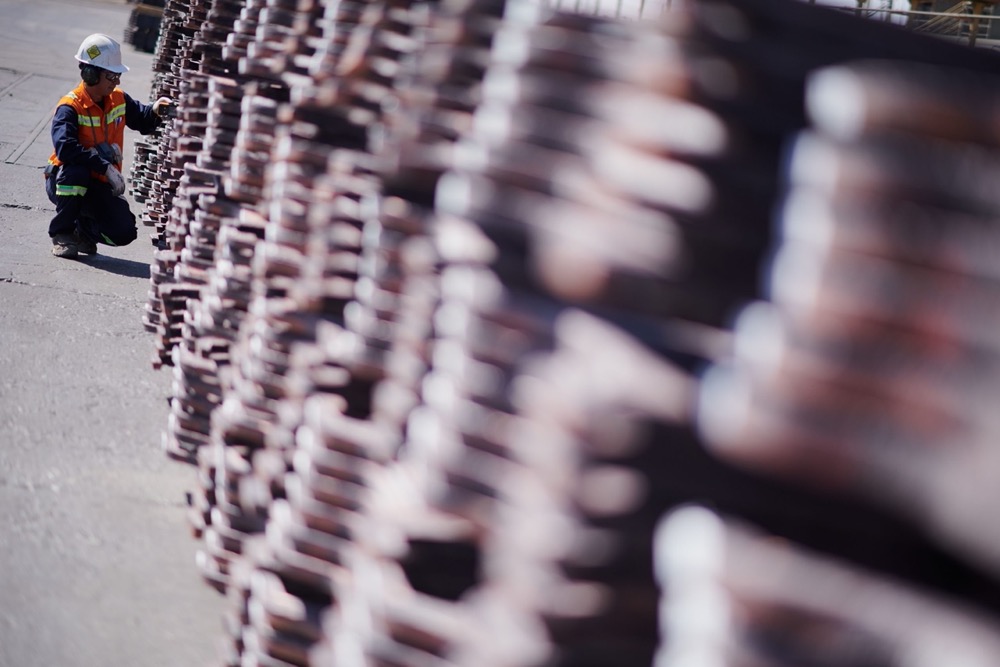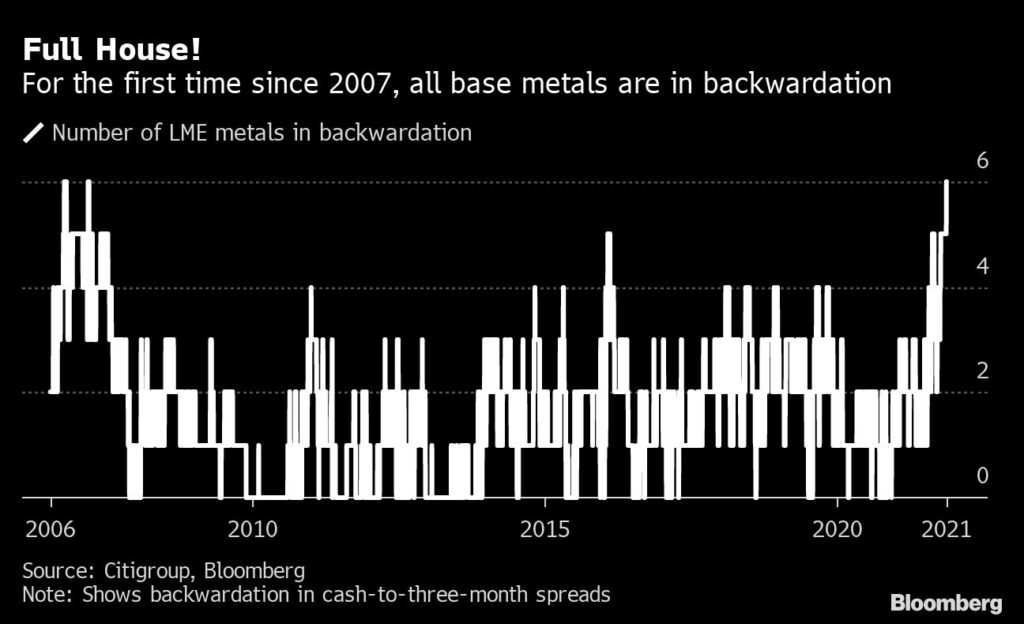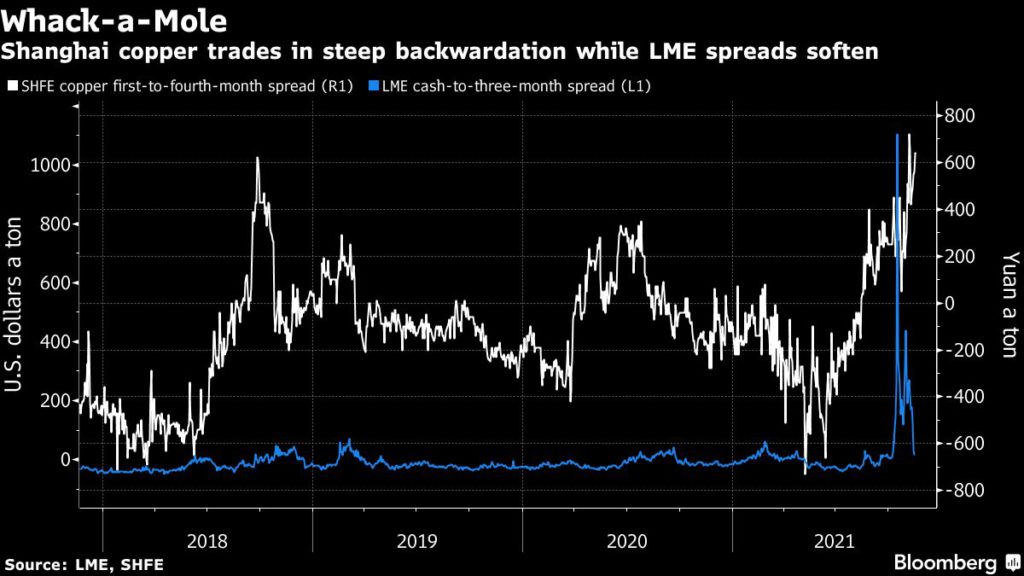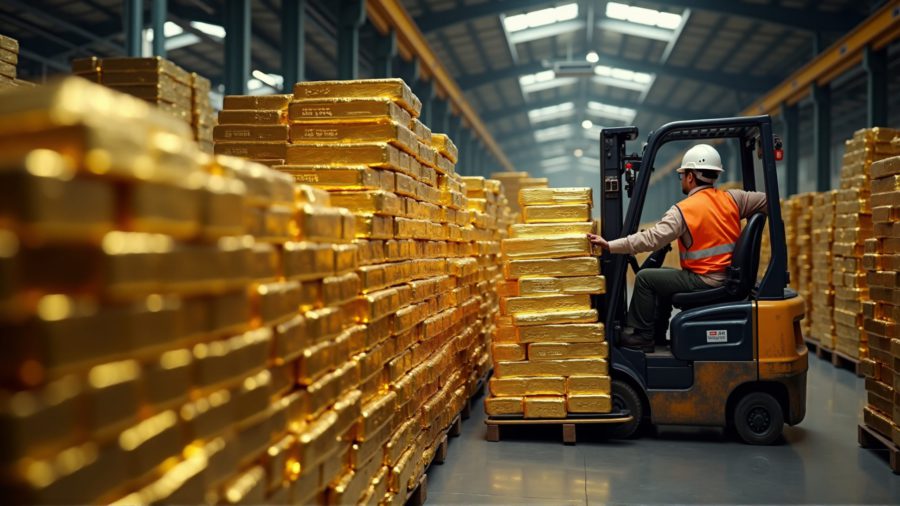Metals from aluminum to zinc are all flashing tight supply right now

For the first time in over a decade, six of the world’s most vital industrial metals are flashing a rare synchronized warning over tight supply, as logistical turmoil and strong demand spark anxiety among buyers.
From aluminum to zinc, spot prices for base metals on the London Metal Exchange are all soaring above futures — a condition known as backwardation — for the first time since 2007. Buyers are paying a premium for access to metal against a backdrop of plunging exchange inventories, supply-chain delays, production hiccups and surging demand for industrial commodities in everything from construction to consumer electronics.
In copper and tin, the scale of the backwardations has reached record highs in recent months, exacerbating the sense of panic among industrial users who have been dealing with escalating supply turmoil since the pandemic began.

Signs of tight physical supply across the metals market are also acting as a counterweight to the growing nervousness about the broader macro outlook for major industrial economies, and particularly top commodities consumer China. In the case of aluminum, spreads have tightened significantly over the past month, even as prices slumped from multiyear highs.
Given the diverse uses and supply dynamics for the individual metals, the unusual synchronized tightness across the LME’s six main contracts is a sign of how widespread the logistical turmoil is, and how broad the rebound in demand has been since the early stages of the pandemic, said Oliver Nugent, a base metals analyst at Citigroup Inc.
“A big part of the tightness that consumers are facing is down to logistics, there’s no doubt about it,” Nugent said by phone. “But it’s also indicative of very firm demand.”
To be sure, the across-the-board tightness might not last for long. Backwardations in markets like copper and lead are fading, even as aluminum and nickel spreads become tighter. But one consequence of the supply-chain turmoil is that the price spreads on other global exchanges might tighten further even as the LME market softens, Nugent said.

In the case of copper, for instance, there’s a growing backwardation in Shanghai Futures Exchange contracts, even as LME spreads retreat from all-time highs seen during an unprecedented supply squeeze last month.
Copper futures fell 0.9% to $9,472 a tonne at 11:57 a.m. in London, with deliveries of metal into LME warehouses in the US helping to partially allay concerns about supply in the wake of the squeeze.
Aluminum prices were 0.8% higher at $2,594.50 a tonne on the LME on Wednesday, down from a peak above $3,200 seen last month.
(By Mark Burton, with assistance from Yvonne Yue Li)
More News
Study confirms drop-in electrode technology enables 10 minute EV charging at -10 °C
April 14, 2025 | 04:06 pm
Newmont deploys Ericsson private 5G at Australia’s largest underground mine
April 14, 2025 | 01:20 pm
{{ commodity.name }}
{{ post.title }}
{{ post.date }}




Comments